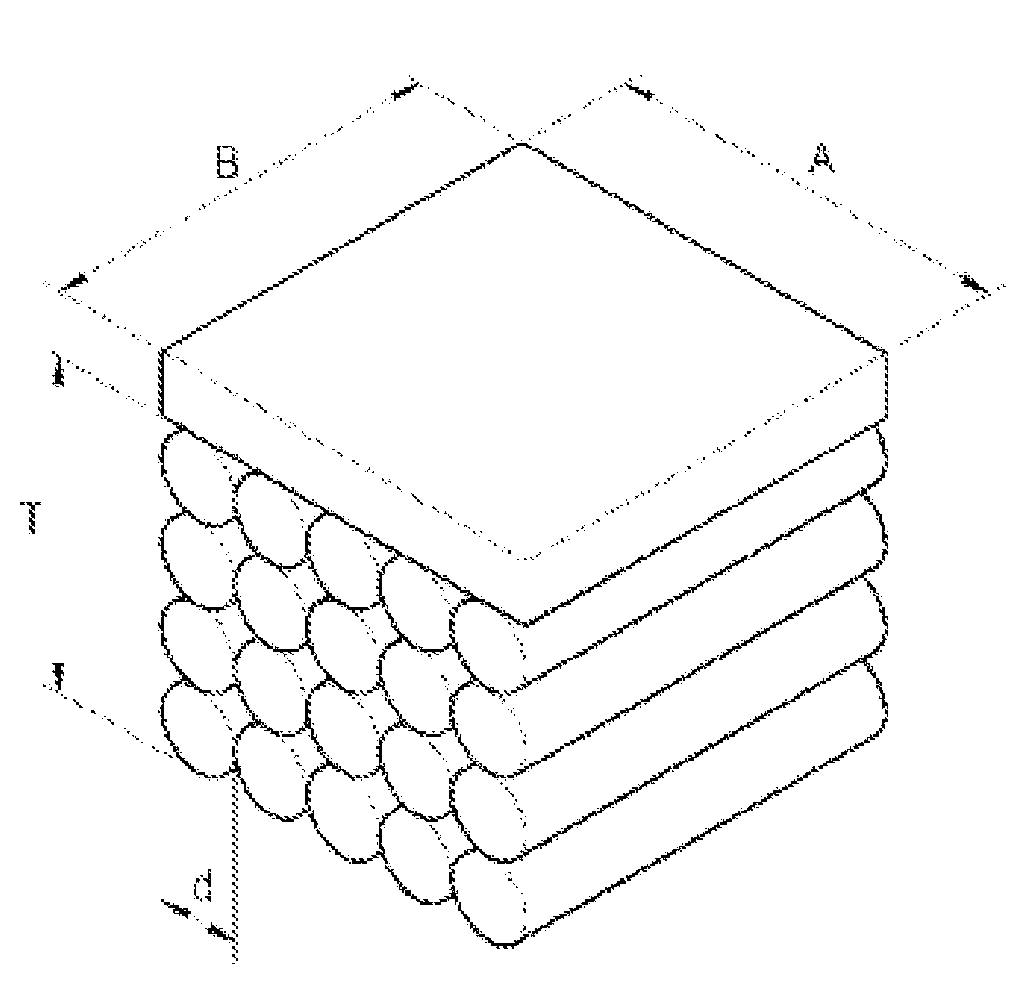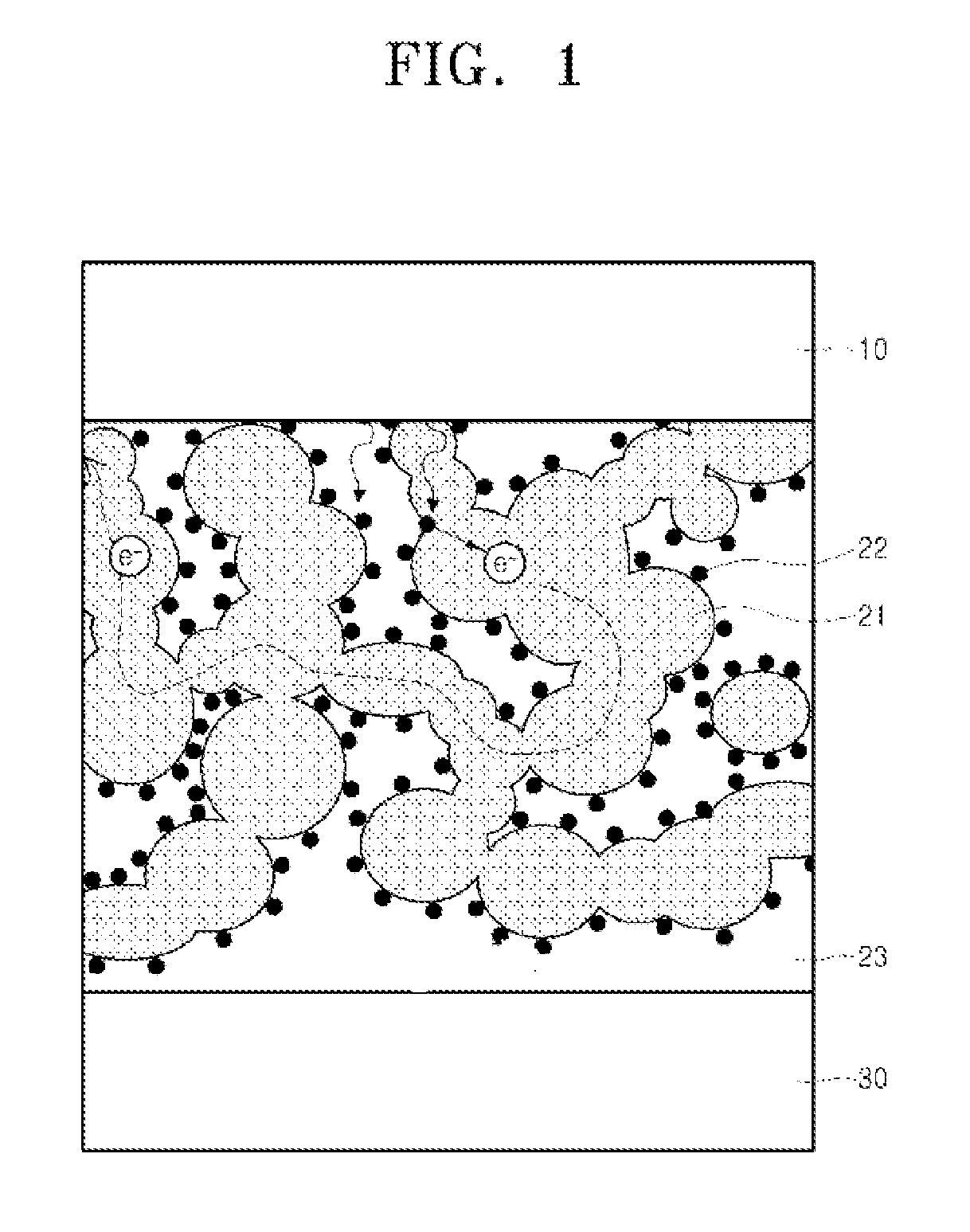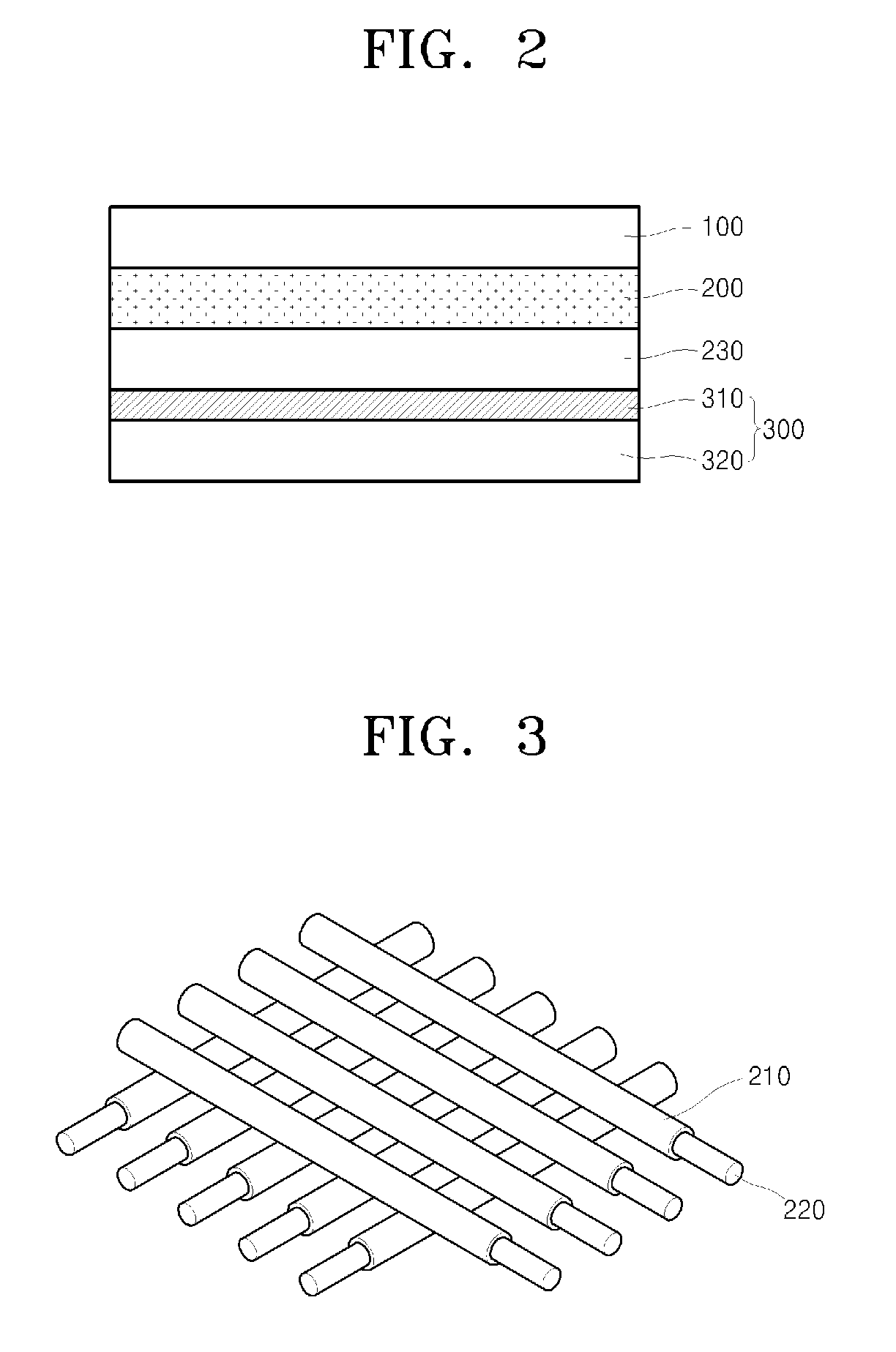Dye-sensitized solar cell using conductive fiber electrode
a technology of conductive fiber and solar cell, applied in the field of solar cells, can solve the problems of inability to manufacture and utilize dye-sensitized solar cells, inability to bendable dye-sensitized solar cells, and reduced glass flexibility, so as to achieve the effect of increasing flexibility and formability of dye-sensitized solar cells and significantly improving energy conversion efficiency
- Summary
- Abstract
- Description
- Claims
- Application Information
AI Technical Summary
Benefits of technology
Problems solved by technology
Method used
Image
Examples
embodiment
[0040]Referring to FIGS. 2 and 4, the current embodiment of the present invention will be described in more detail.
[0041]The semiconductor electrode 200 according to the current embodiment of the present invention has a structure in which a conductive layer, in which glass fibers that are surface-treated with ITO or SnO2 and have a diameter of 10-100 μm are stacked, is covered with a nano-particle semiconductor oxide layer 212 formed of TiO2 having a size of about 15-25 nm. Dye molecules 214 formed of ruthenium (Ru) complex compound are adsorbed on a surface of the nano-particle semiconductor oxide layer 212. The semiconductor electrode 200 is covered by an electrolyte solution 230. The electrolyte solution 230 may be an iodine based oxidization-reduction liquid electrolyte, for example, an I3− / I−electrolyte solution in which 1-vinyl-3-hexyl-imidazolium iodide of 0.7 M, Lil of 0.1 M, and iodine (I2) of 40 mM are dissolved in 3-methoxypropionitrile.
[0042]The counter electrode 300 may...
PUM
 Login to View More
Login to View More Abstract
Description
Claims
Application Information
 Login to View More
Login to View More - R&D
- Intellectual Property
- Life Sciences
- Materials
- Tech Scout
- Unparalleled Data Quality
- Higher Quality Content
- 60% Fewer Hallucinations
Browse by: Latest US Patents, China's latest patents, Technical Efficacy Thesaurus, Application Domain, Technology Topic, Popular Technical Reports.
© 2025 PatSnap. All rights reserved.Legal|Privacy policy|Modern Slavery Act Transparency Statement|Sitemap|About US| Contact US: help@patsnap.com



